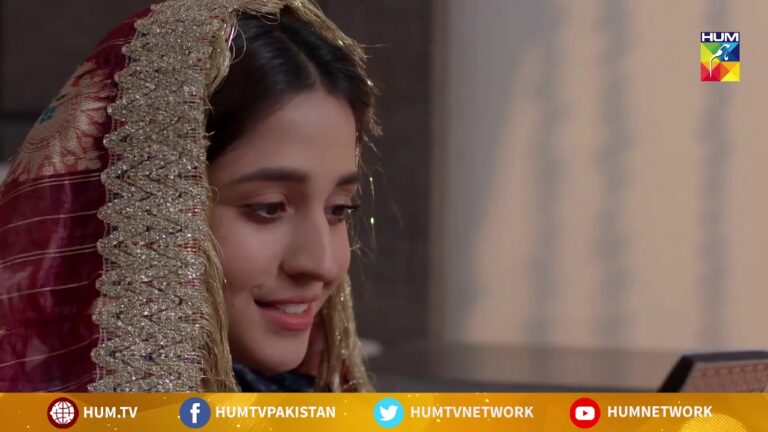Mera Wajood Drama Review: Mera Wajood dramas delve into the complexities of dysfunctional families, often focusing on the struggles of women trapped in a web of domestic oppression and societal pressures. These narratives explore themes of resilience, the yearning for agency, and the fight for a life of dignity in the face of patriarchal dominance. This review analyzes the fictional Mera Wajood drama, dissecting its plot, characters, and the social commentary it offers.
Plot Overview
At the heart of Mera Wajood lies Saba, a woman entangled in a suffocating marriage. Her husband, Hamid, embodies the harsh realities of patriarchy. He wields his power with cruelty, subjecting Saba to verbal and emotional abuse. The narrative unfolds with Saba’s constant battle to navigate a life dictated by Hamid’s whims. The burden of maintaining a semblance of normalcy for their two daughters weighs heavily on her.
The drama introduces a web of complex relationships. Zenia, the elder daughter, struggles with divided loyalties. Fearing the breakdown of the family, she aligns herself with her father, perpetuating the cycle of control. The younger daughter, however, serves as a glimmer of hope. Unlike Zenia, she might possess a rebellious spirit, yearning for a future free from oppression.
Saba finds solace in an unexpected source – her cousin Ahmer. He offers a ray of hope, providing emotional support and advocating for Saba’s well-being. However, the extent of his support and its potential to translate into concrete action remains shrouded in uncertainty.
The narrative could introduce a pivotal conflict that compels Saba to make a difficult choice. This could be a physical escalation of Hamid’s abuse, the threat of marrying off a young daughter, or the revelation of an extramarital affair further shattering Saba’s trust. This event forces Saba to confront the harsh realities of her situation and decide on a course of action – endure the abuse, seek help, or fight for a life of dignity.
Character Analysis
-
Saba: Saba is the quintessential Mera Wajood protagonist. She embodies the quiet strength and resilience of women facing domestic oppression. Showcasing her internal struggles and moments of defiance can create a relatable character.
-
Hamid: Don’t portray Hamid solely as a villain. Perhaps his own upbringing instilled patriarchal beliefs, or he harbors insecurities that fuel his controlling behavior. Adding depth to his character can make the narrative more nuanced.
-
The Daughters: Explore the contrasting personalities of the daughters. Zenia’s fear and alignment with Hamid highlight the impact of witnessing abuse. The younger daughter’s potential rebellion offers a hopeful glimpse into the future.
-
Ahmer: Ahmer’s role can be developed further. Does he become a catalyst for change, or is his support limited by societal pressures?
Social Commentary
Mera Wajood dramas offer a powerful social commentary on the plight of women in patriarchal societies. They expose the normalization of domestic violence, the limitations placed on female autonomy, and the detrimental effects of such dynamics on children. Additionally, they can highlight the importance of female solidarity and the need for support networks for women facing abuse.
Themes
-
Domestic Violence: The core theme revolves around the emotional and psychological abuse faced by women within their own homes.
-
The Fight for Dignity: The narrative explores Saba’s struggle to maintain her self-respect and carve out a space of dignity within a restrictive environment.
-
The Cycle of Control: The drama depicts how patriarchal norms perpetuate a cycle of control, impacting not only Saba but also her daughters.
-
The Importance of Hope: Despite the hardship, the younger daughter’s potential defiance offers a glimmer of hope for a future free from oppression.
Building upon the foundation laid in the previous review, let’s delve deeper into the complexities of Mera Wajood dramas. We’ll explore opportunities to add layers to the characters’ motivations, introduce diverse resolutions, and weave in additional themes for a richer narrative tapestry.
Character Nuance
-
Saba: Don’t portray Saba simply as a victim. Perhaps she harbors a hidden strength or dreams for a different life. Showcase moments where she challenges Hamid subtly or seeks external support, adding depth to her character.
-
Hamid: Explore the reasons behind Hamid’s behavior. Did he witness abuse in his own childhood? Does he face external pressures that fuel his insecurities? Adding layers to his character can create a more nuanced understanding of the situation.
-
The Daughters: Give the daughters distinct personalities. Zenia might secretly yearn for her mother’s strength, while the younger daughter could actively rebel against her father’s control. Showcasing their internal conflicts adds complexity.
-
Ahmer: Develop Ahmer’s role. Does he connect Saba with resources or legal aid? Does he confront Hamid directly, creating a potential conflict within the family? Explore his limitations and potential as a source of support.
Exploring Resolutions
-
Breaking Free: Saba could gather her courage and leave the abusive relationship, seeking refuge with family or a women’s shelter. This could showcase the importance of external support systems.
-
Standing Up and Fighting Back: Perhaps Saba finds her voice and challenges Hamid with legal action or public exposure. This could highlight the power of speaking out against abuse.
-
Seeking Reconciliation (with Caution): In a complex scenario, Saba and Hamid might attempt couples therapy to address the root causes of his behavior. This path should emphasize Saba’s safety and the importance of genuine change from Hamid.
-
The Impact of Change: The drama can explore the long-term effects of Saba’s choice. Does she rebuild her life with her daughters? Does Zenia overcome her fear and support her mother?
Additional Themes
-
Societal Pressures on Men: The narrative could explore the societal expectations placed on men that contribute to their controlling behavior.
-
The Role of Extended Family: Mera Wajood dramas can showcase the limited support or even collusion of extended family in perpetuating the abuse.
-
Empowering the Younger Generation: The drama could depict the younger daughter actively advocating for change, inspiring others to challenge patriarchal norms.
Incorporating Social Issues
-
Domestic Violence Laws and Resources: The drama can highlight the importance of strong legal frameworks and accessible support systems for victims of abuse.
-
The Stigma of Mental Health: Exploring the possibility of counseling for both Saba and Hamid can address the stigma surrounding mental health and its role in abusive relationships.
-
Economic Dependence and Women’s Empowerment: The narrative can showcase the challenges faced by women who are financially dependent on their abusive partners, emphasizing the need for economic empowerment programs.
Alternative Endings
-
A Beacon of Hope: The drama might not offer a perfect resolution, but it can end with Saba taking the first steps towards a better life. This could inspire viewers facing similar situations to seek help.
-
Breaking the Silence: Even if Saba remains trapped, the drama could end with her confiding in someone or seeking legal advice. This highlights the importance of breaking the silence and taking the first step towards change.
-
A Catalyst for Change: Perhaps Saba’s story inspires a community discussion about domestic violence, leading to increased awareness and support for victims.
Conclusion
Mera Wajood dramas offer a haunting exploration of domestic oppression and the yearning for a life of dignity. While the entertainment value is undeniable, these narratives spark conversations about breaking the cycle of abuse, the importance of female empowerment, and the societal shift needed to create a world where women can live free from fear and control.










+ There are no comments
Add yours